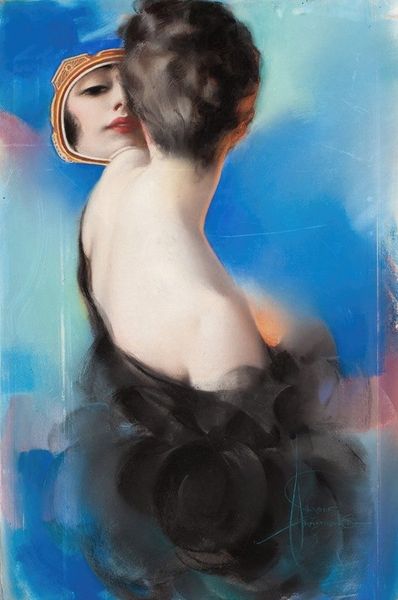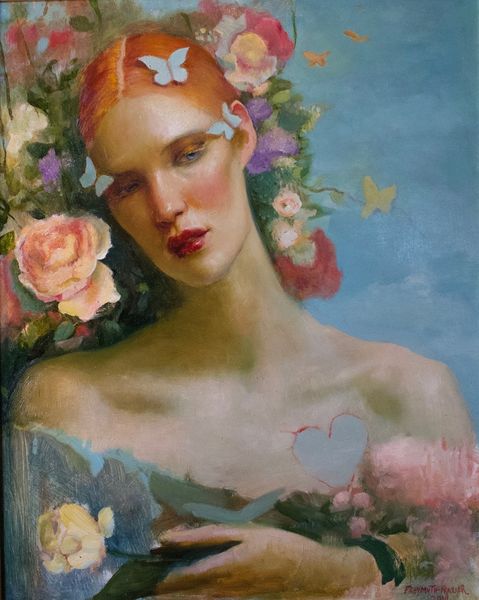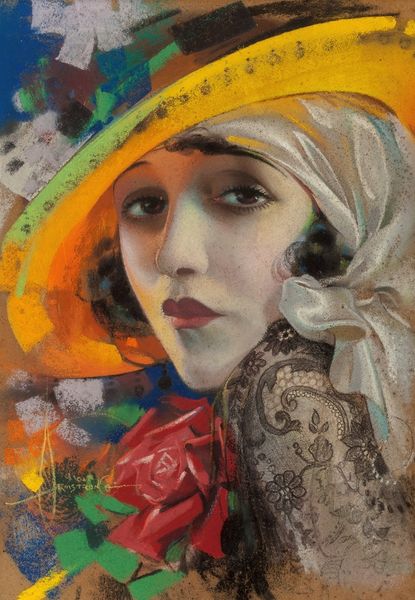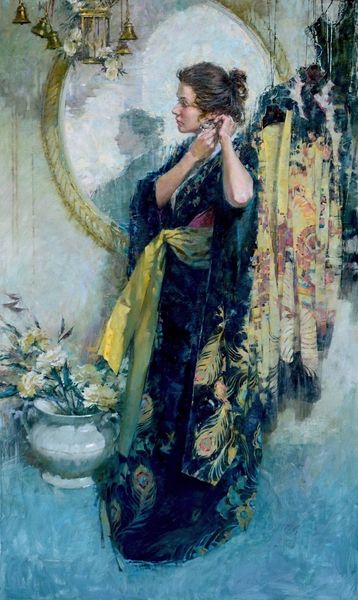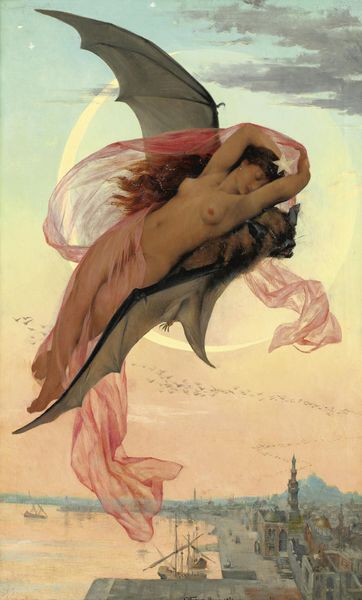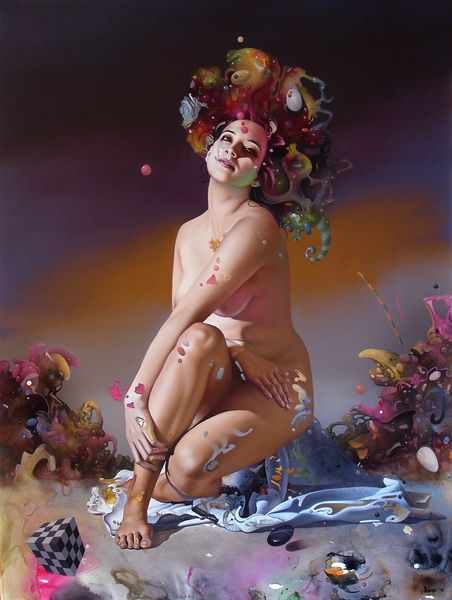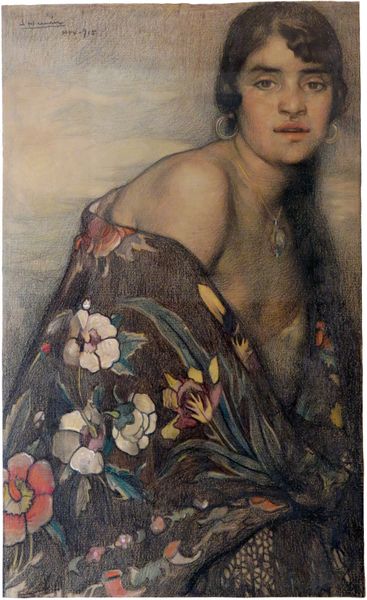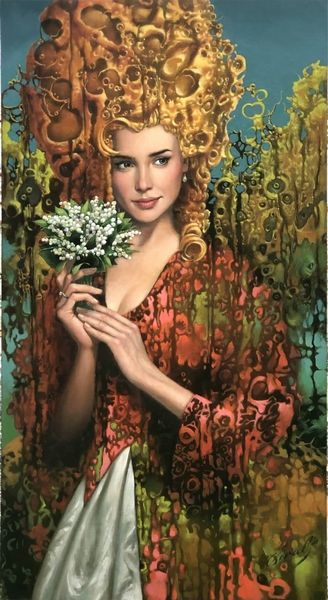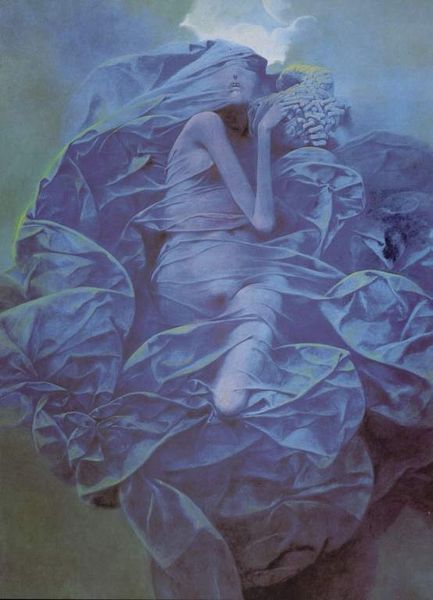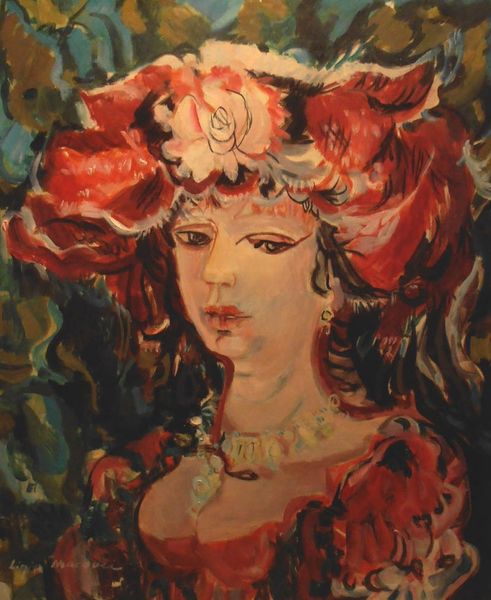
pastel
#
portrait
#
figuration
#
intimism
#
romanticism
#
pastel
#
portrait art
Copyright: Modern Artists: Artvee
Curator: This is "Girl with Roses," a pastel portrait by Rolf Armstrong. Editor: It has a languid, dreamlike quality. I’m struck by the soft, almost powdery texture – and the girl's expression seems utterly lost in thought, or perhaps, memory. Curator: Indeed, the pastel medium lends itself beautifully to that impression. The roses she delicately holds… the rose, a layered and often paradoxical symbol of both earthly and divine love, or pain, as in, *sub rosa.* This image could evoke suppressed emotions. Editor: Given that it’s a pastel, I wonder about its preservation. Pastels are notoriously fragile; the pigment simply sits on the surface. This artwork has most likely been properly glazed; I'm curious what materials Armstrong used in that frame; they contribute to its preservation and presentational narrative. Curator: Good point. Also interesting that Armstrong, known for his pin-up art, might touch on these more vulnerable portrayals, rather than those destined for mass media, and a culture of immediate and widespread visibility, which is at once a loss of an innocence. Editor: Well, the intimate scale suits the medium; pastel lends itself to a direct, immediate form of image making, unlike oil, which demands the time for blending and slow, steady mark-making. Perhaps Armstrong worked with a professional printer who also marketed and sold fine art prints to private clients? I find myself contemplating its mode of display - was this artwork initially presented in salons? In commercial settings like theater lobbies? This context adds layers to our experience. Curator: Certainly it could have circulated as a widely-reproduced image; you point out that access can change an object's meaning and intent, for its makers as well as viewers. To me, the young woman’s upward gaze also suggests aspiration. I cannot say toward what—possibly a form of transcendence. Editor: Ultimately, the history of a pastel like "Girl with Roses," isn’t just about pigments and technique; it’s wrapped up in questions of commerce, domesticity, and the social life of images. Thank you. Curator: Agreed. It’s a reminder that even the most seemingly simple artwork is a repository of its own fascinating past.
Comments
No comments
Be the first to comment and join the conversation on the ultimate creative platform.
